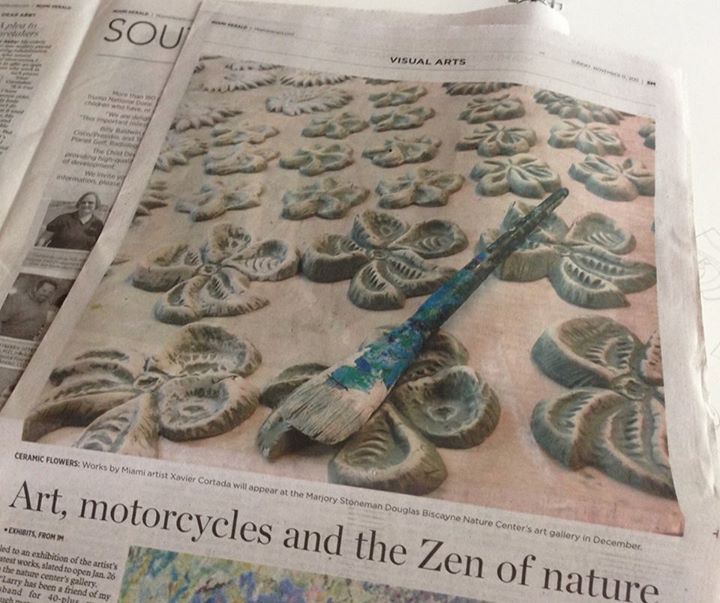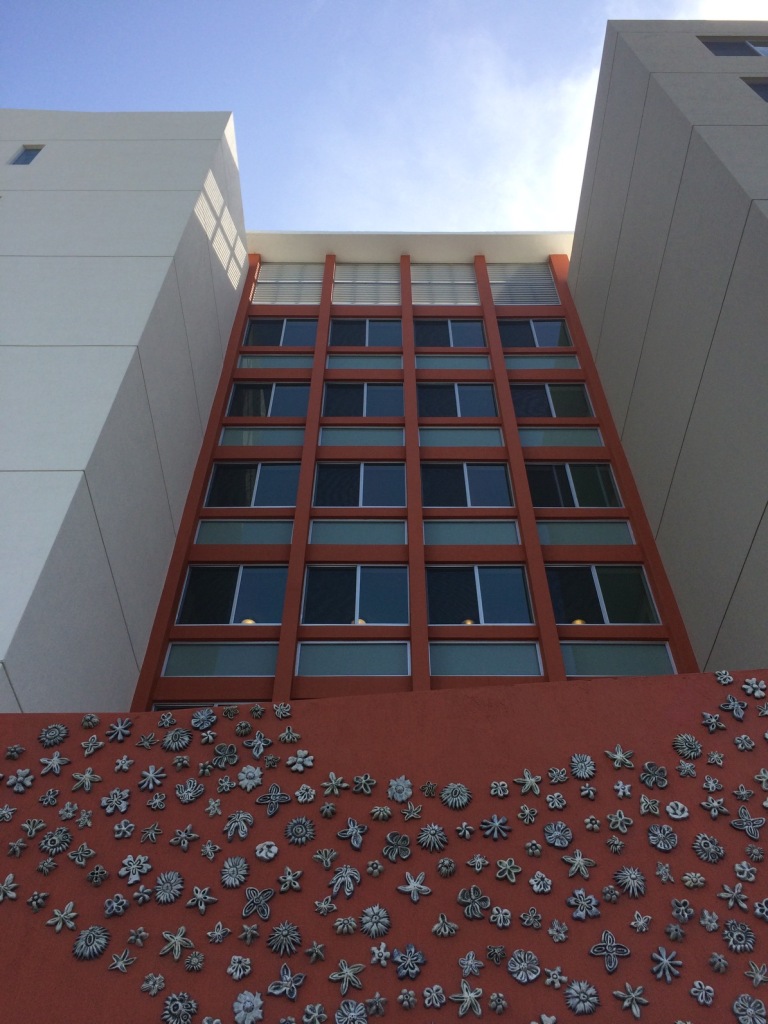BACK TO: HOUSING | BAS RELIEF
Main | About
These 500 flowers were exhibited at the Biscayne Nature Center gallery in 2013 to commemorate Ponce de Leon’s landing on that island 500 years ago. Later, they were exhibited at the Oldest House Museum in Key West, before being permanently installed here to honor Florida’s quincentennial.

 Xavier Cortada, “500,” 500 hand-glazed porcelain sculptures, 2013
Xavier Cortada, “500,” 500 hand-glazed porcelain sculptures, 2013
A public art project at Collins Park Apartments (Miami-Dade Housing Authority), Miami, FL
Artist’s Statement
In the spring of 1513, with its flowers in full bloom, Spanish explorer Juan Ponce de Leon landed on the eastern shore of the peninsula where I live. Wanting to claim it for Spain, he named it Florida, from the Spanish word “flor” or flower.
I created these 500 porcelain flower pieces in 2013 to commemorate that moment. Each of the flowers references one of 500 wildflower gardens planted across the state as part of FLOR500, my participatory eco-art project.
The first FLOR500 garden was planted at the Museum of Florida History in Tallahassee on March 22, 2012 and was dedicated to the indigenous people of Florida. A replica (glazed in white) of one of these porcelain flowers is inside a time capsule in that building. It will be opened on 2095, the 250th anniversary of Florida’s statehood.
In FLOR500, I wanted to create an art project that allowed our inhabitants to understand the multicultural origins of our state, its fragile biodiversity, and its threatened coastlines. So I took the father of the Fountain of Youth mythology and his historic milestone as a point of departure to explore ways of rejuvenating “the Sunshine State.
This exploration to wasn’t solely mine; I wanted as many Floridians as possible to really understand it. So, I went big.
500 FLOWERS
My first step was to seek out biologists and botanists from across the state to identify the wildflowers that were around when Ponce de Leon and his crew first landed. As the architect of the project, I gave some guidelines: I wanted a diversity of color, region and size. I wanted to focus on everything from weeds to flowering trees, so that people understood the varieties of flowering plants in Florida. And I wanted 500. One for every year of the quincentennial.
500 ARTISTS
Then, I invited 500 Florida artists to find and depict those 500 flowers. The art pieces and information about each artist and flower are exhibited as a virtual bouquet on the project website, flor500.com.
500 GARDENS
Students from 500 Florida schools and libraries were then encouraged to plant 500 wildflower gardens and dedicate them to one of 500 historic Florida figures selected by our team of historians.
500 HISTORIC FIGURES
The roster of 500 includes individuals who have helped mold our state’s history since March 3rd, 1513, when Ponce de Leon set sail from Puerto Rico on the Santa Maria de Consolación, Santiago, and San Cristóbal.
The FLOR500 project marks the importance of the moment when our state changed forever and gives us a glimpse of what its landscape was like 500 years ago.
This project was created to inspire Floridians to plant gardens at home to honor the natural and human history of the state. The more participants, the stronger the state: by growing native wildflower gardens at home, participants help reduce drought and improve biodiversity.
The effort furthers my long-standing commitment to eco-art projects that engage community and expose human impact on the environment.
My hope is that by planting one garden at a time, we are planting seeds of change. Change is needed, so that when we, as a community of engaged individuals, look to the next 500 years, we can find better ways to coexist with nature. And with one another.